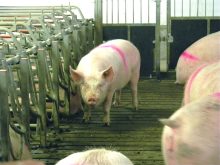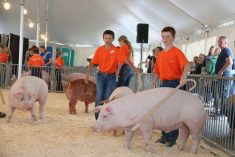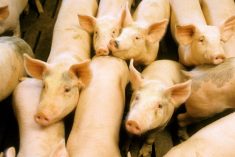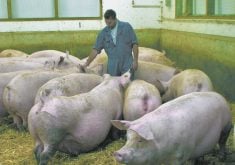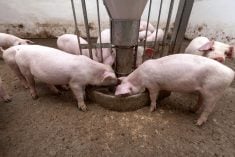Global swine and poultry breeding technology supplier Hendrix Genetics recently added its support to a U.S.-based research effort aimed at delaying or even eliminating maturity in piglets as a way of tackling the troublesome phenomenon of boar taint.
However, a well-respected University of Guelph boar taint researcher says “the jury’s still out” on whether or not the gene editing technology used by the U.S. alliance will gain favour among advocates of food that’s free of genetic modification (GMOs).
Why it matters: Finding alternatives to castration as a means of eliminating boar taint has become a higher priority due to animal welfare concerns.
Read Also
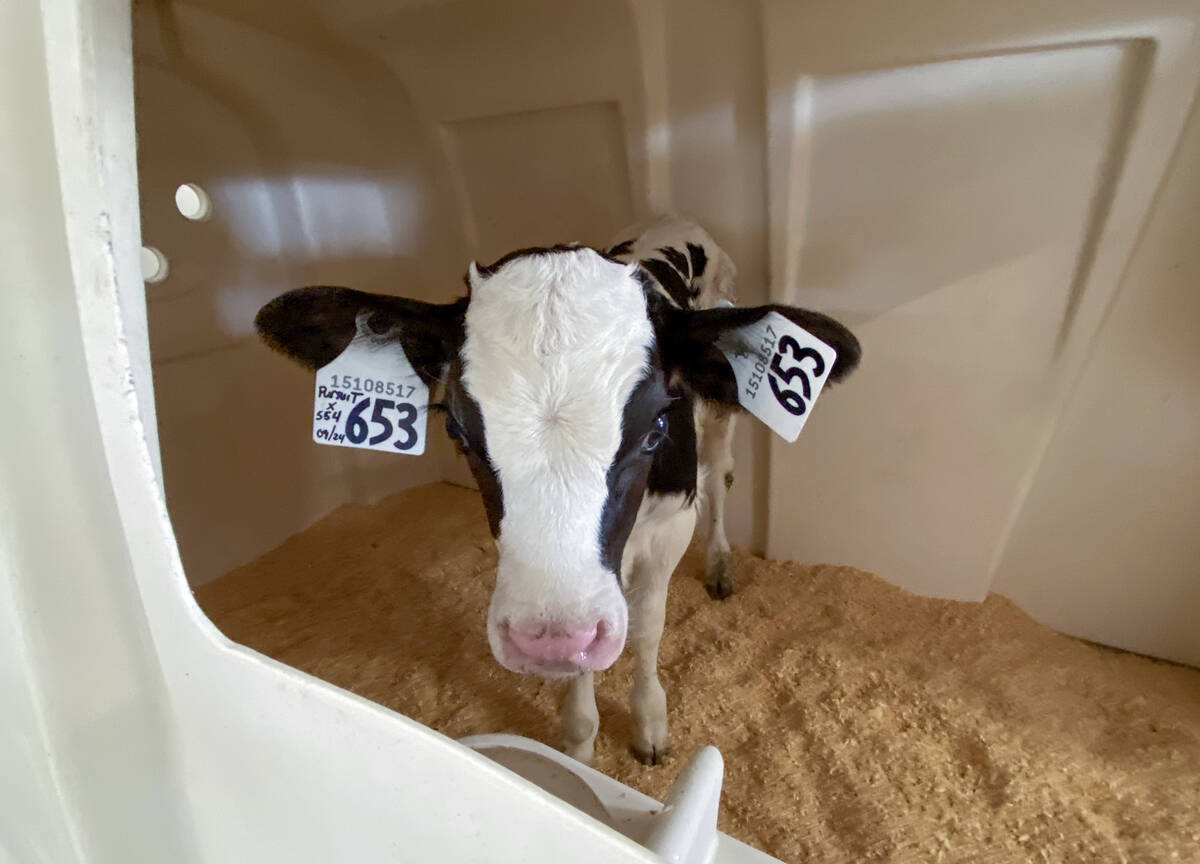
Lactanet turns methane expertise into business opportunity
Lactanet’s new fee-for-service breeding tool initiative to reduce greenhouse gas emissions in Canadian and Swiss Holstein herds will launch in April 2026.
The alliance, backed by funding from the United States Department of Agriculture and the U.S.-based Open Philanthropy Project, came together in early 2018 led by swine genetics suppliers Recombinetics and DNA Genetics. Hendrix Genetics, with business north of the border through its Hypor subsidiary, provides the potential for significant representation of Canadian interests in the project.
The project has a clear goal: the breeding of what are referred to in a news release on the Recombinetics website as “male piglets born naturally castrated.” Scientists with the St. Paul, Minnesota company, say in a release they have “developed a precision breeding method resulting in male piglets that remain in a pre-pubertal state . . . To determine the commercial viability of pigs bred to be castration-free, alliance researchers will evaluate findings to investigate feed efficiency, meat quality and best practices for recovery of puberty and fertility.”
Efforts to tackle boar taint are certainly not new. Dr. Jim Squires, now chair of the University of Guelph’s Department of Animal BioSciences, has spent a significant part of his 30 years in academia working on the topic. And although the efforts of Squires and others on the Guelph team share a genetic focus with the Recombinetics-led project, he stressed in a recent interview with Farmtario that the use of the term “precision breeding” doesn’t hide the fact that the U.S. effort relies on what’s widely known as gene editing: cutting an organism’s DNA strand and splicing in pieces of DNA taken from another organism.
“We’ve played around with some transgenics over the years,” he said of the Guelph team, adding that a new partnership with researchers at McGill University in Montreal, set to begin this year, will look at gene editing. Gene editing, he agrees, can be viewed in a different light than earlier gene-splicing technologies because the DNA being inserted is not laboratory-generated but rather from an existing organism. “But I think the jury’s still out as to whether or not it’s going to be accepted” as a non-GMO approach.
The recent focus of the Guelph research team, by contrast, has been to describe a “boar taint metabolic pathway” that hopefully will allow researchers to isolate the genetic markers present in animals which don’t exhibit the boar taint trait, but also to identify management or environmental factors which might also play a role in combination with genetics.
“One thing we’ve looked at is diet as it relates to boar taint,” Squires explained. “And that has worked moderately well. So it’s another of the tools we might have.”
“The goal of the research here was to understand the natural variation in taint, identify genetic markers that would identify individual pigs that would be low in taint, and breed lines of pigs that were naturally low in taint,” said Steve De Brabandere of the University of Guelph’s Research Innovation Office.
Speaking with Farmtario, Squires conceded that animal welfare wasn’t “a big deal” in North America back in 1987 when he began his research career. But even then, he recalled, opposition among consumer groups to castration was on the radar in Europe. So it has always been seen as a “win-win” scenario if castration could be eliminated in conjunction with improvements in other aspects of pork production.
Through a partnership with the Canadian Centre for Swine Improvement and some provincial counterpart organizations, a series of trials are just wrapping up applying what Squires called “a suite of (genetic) markers” in breeding scenarios. The goal is to show that boar taint can be consistently eliminated among piglets that, otherwise, develop normally into boars without adverse effects on carcass quality.
Squires says an application could go out soon for a new round of funding from Genome Canada, this time to expand the genetic markers research beyond the first-generation offspring and beyond purebred stock.
Recombinetics, one of the lead companies in the US-based boar taint effort, is also currently active in Canada working with SEMEX to develop polled (horn-free) dairy calves.







